#Endangered Wallabies
Text
Lonely Planet's Top 10 Camping Destinations for This Easter
Discover the untold beauty of Australia’s most enchanting hidden gems, from the haunting allure of Yerranderie Ghost Town to the luxurious solitude of Faraway Domes in Glen Innes. Venture into the heart of nature with Arkaroola Wilderness Sanctuary’s star-studded skies, immerse yourself in the off-grid elegance of Aquila Glamping, or find serene isolation at Bruny Island Hideaway. Each…

View On WordPress
#4WD Trails#Air-Con Domes#Aquila Glamping#Arkaroola Wilderness#Astronomy Activities#Aurora Australis#Bank Room#Bay of Fires Retreat#Binalong Bay#Blue Tier Mountains#Bruny Island Hideaway#Bushwalking#Camping NSW#Chef’s Kitchen#Christmas Island#Cliff-Top Glamping#Clifftop Hepburn#Colonial Towns#Community Firepit#Conservation Effort#Dark Sky Sanctuary#Dirt Road Adventure#Egyptian Cotton#Endangered Wallabies#Endeavour Fern Gully#Ensuite Luxury#Faraway Domes#Farm-Fresh Eggs#Federation History#Flinders Ranges
0 notes
Photo
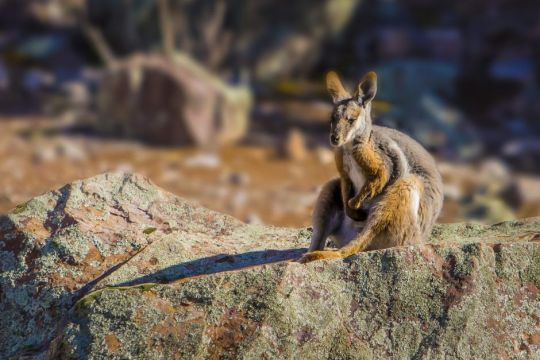
One of the best places in Australia to spy the endangered yellow-footed rock wallaby.
Wilpena Pound - South Australia, Australia
#wilpena pound#south australia#australia#yellow-footed rock wallaby#wallaby#animal#mammal#wildlife#endangered#nature
254 notes
·
View notes
Text
"A large research project studying endangered species in Australia has tallied 29 recovered species—all animals that can be safely de-listed from the country’s endangered species list.
Australia’s Protection and Biodiversity Conservation (EPBC) Act currently lists 446 species of animals in genuine need of protection, but 29 of those are no longer in need—15 mammals, 8 birds, 4 frogs, a reptile, and a fish.
Among these critters are the golden, Western barred, and Eastern barred bandicoots, Western quoll, sooty albatross, waterfall frog, Flinder’s Range worm-lizard, yellow-footed rock wallabies, greater bilby, humpback whale, growling grass frog, Murray’s cod, and others.
Australia has been a focus of endangered species conservation for decades because so many of the animal varieties are found nowhere else.
Invasive predators introduced and living here for decades, including foxes and cane toads, have proven highly disruptive to local wildlife like bandicoots and bilbies.
Unlike America’s ESL, the EPBC doesn’t mandate that species be reviewed regularly for recovery. These large scientific papers are rare and represent moments to celebrate for Australia’s conservationists."
-via Good News Network, 2/28/23
#australia#endangered species act#invasive species#conservation#biodiversity#conservation news#albatross#bandicoot
246 notes
·
View notes
Text

I would like to interrupt my usual writing content to tell you about potoroos.
The potoroo is the most endangered mammal in Australia. It looks a lot like a large rat, but it is actually a marsupial, and a macropod marsuapial at that, just like a kangaroo! They are so rare that even many people in Australia have never heard of them. They date back to the Ice Age and scientists consider them to be "living fossils" but they were nearly wiped out when European colonizers arrived in Australia. . .bringing with them cats and foxes that hunted the potoroos into nigh-obliteration. They were thought extinct until a researcher found one alive in a wallaby trap.
Since then, there's been conservation efforts to help shelter and breed them, but it's slow-going since there's so little awareness of them, and they're not big glamorous animals like tigers, pandas, or whales, so it's hard to get people invested. But they're super important for the environment; they're "ecosystem engineers"!
See, they eat truffles and other fungus, and when they dig for these, they turn over the soil, which spreads around the minerals in the soil, which nurture nearby plants that provide food and shelter for other animals. Their digging also turns over the leaf litter, which helps prevent forest fires. And what does Australia have a big problem with these days? Forest fires.
Basically, they're not the "coolest" animal and are a small, humble-looking creature, but they're incredibly important to the ecosystem as a whole and can help prevent vast damage to it, and their near-extinction was entirely the fault of invasive humans, and I think they deserve as much of a shot as they can give them!
If you would like to help them, I recommend donating to the AUSSIE ARK or the GILBERT'S POTOROO ACTION GROUP
7 notes
·
View notes
Text
The Sims 4: Down Under
**I asked AI to come up with an Australia themed Expansion Pack**
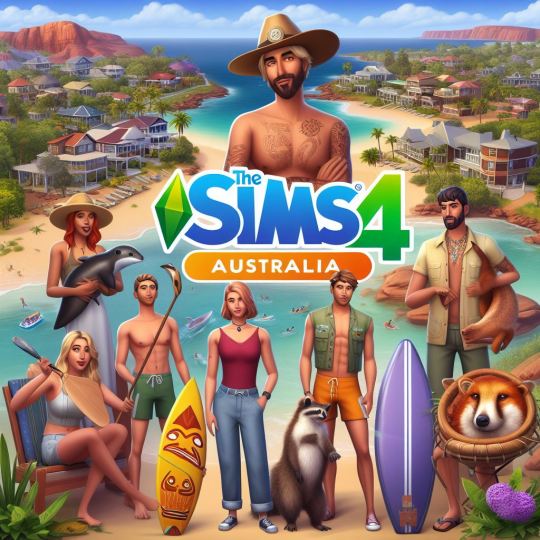
This expansion pack would add a new world based on suburban and coastal Australia. The world would include neighborhoods inspired by Sydney, Melbourne, the Gold Coast, and the Great Barrier Reef.
New Gameplay Features:
Surfing - Sims can surf at various beaches around the world and can enter surf competitions. Different quality surfboards impact performance.
Wildlife - The new world includes native Australian animals like kangaroos, koalas, wallabies, and more that Sims can interact with.
Conservationist Career - Sims can become conservationists and work to protect endangered habitats and species. They can also volunteer at wildlife shelters.
Bondi Beach Lifeguard Career - Sims can become Bondi lifeguards and rescue other Sims while maintaining the beach.
Woohoo in the Bush - Sims can Woohoo in designer tents at campgrounds around the world.
New Build/Buy Objects:
Australia-themed decor like boomerangs, didgeridoos, Aboriginal art, and more.
Beach/surf items like surfboards, wetsuits, beach towels, etc.
Australian suburban architecture and furniture.

New Create-a-Sim Features:
Australian-inspired everyday fashion like boardshorts, bikinis, "Aussie salon" haircuts, and accessories.
Surfer fashion like rash guards, boardshorts, flip flops.
Iconic Australian costumes like Steve Irwin's khakis and crocodile hunter hat.
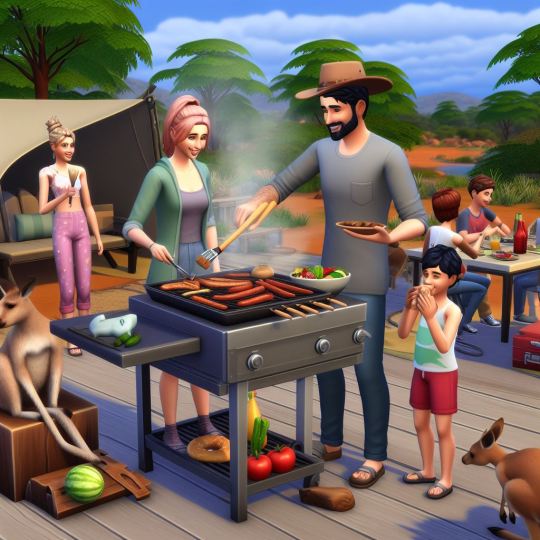



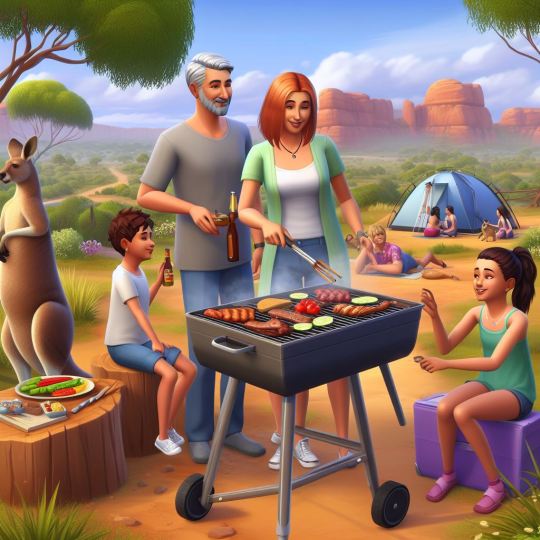
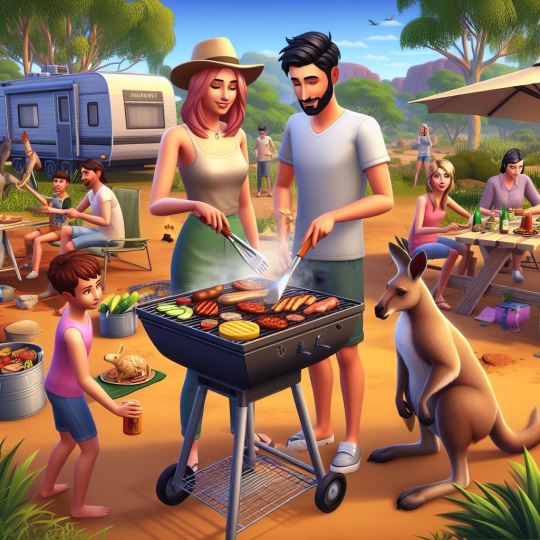


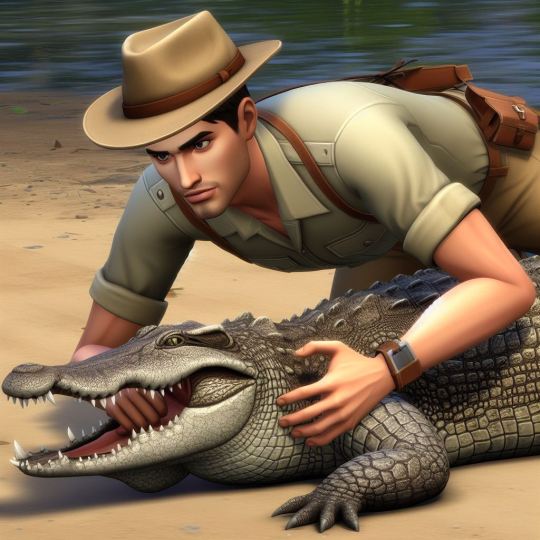

Now I wish it was a thing...
12 notes
·
View notes
Text
Unusual Dionysus devotionals:
Basket weaving - baskets are sacred to Dionysus, hence the epithet ‘cittophorus’ meaning basket-bearer.
Do drag/cross dressing - one of his epithets was ‘pseudanor’ meaning ‘false man’, which you could interpret as being related to cross dressing.
Eat meat - another of Dionysus’ epithets was ‘omadios’ or flesh eater, alluding to human sacrifice. I wouldn’t try cannibalism though. If you’re vegan or vegetarian, try a meat substitute like a beyond burger or tofu.
Make a thyrsus with foraged objects - find a pinecone, a large stick (or fennel stalk if possible) and some ribbon. Carve the bark off the stick and sand it back. Glue the pinecone to the top and wind colourful ribbon around it in Dionysus’ colours (purple, gold red, green etc).
Go deer hunting - make sure you or whoever is shooting is a brilliant shot, as you don’t want the animal to suffer. Go through the process of butchering the animal, eating the meat and tanning the hide to get close and comfortable with the cycle of life and death, which Dionysus is a big part of. Wear the deerskin when you go into altered states. I’ve never gone hunting, but my neighbour is a brilliant shot and shoots wallabies when the local population becomes to big, because otherwise the wallabies starve to death with not enough food in the winter. A quick, painless death is kinder and the meat isn’t wasted (yes, you can eat wallaby), and we don’t end up with overpopulation. PLEASE DO NOT HUNT BIG GAME. Seriously. Safari hunting is unnecessary and targets endangered species for the purpose of having a trophy. I know Dionysus wore a leopard skin, but stick to fake leopard fur. If you’re vegan or vegetarian, there are lots of faux furs you can use instead.
Save the bees: honey is a favourite offering to Dionysus and it was said to drip down his thyrsus. By planting bee attracting flowers and not using potentially harmful pesticides, you can help your local bee population. You can also set up a ‘bee hotel’. Purchase local honey if you can! My dad is a beekeeper and he takes so much pride in keeping his bees safe and healthy, but lately everyone’s bees have been dying. It’s really distressing in the beekeeping community, and likely due to a mix of pesticides and climate change, where flowers aren’t blooming due to the weather.
Attend a pride parade - dress as a satyr or maenad and attend pride to celebrate the queer aspect of Dionysus. People will love your costume - I promise. For a satyr, little horns and deer makeup are cool. For a maenad, wear ivy in your hair and loose white clothing. People go to pride in all sorts of clothes so you won’t stick out.
Visit the graveyard where your relatives are buried, or a local graveyard if you don’t have relatives buried near where you live - Dionysus is associated a lot with the dead, and one part of Anthestria was pouring libations on the graves of the deceased. DO NOT TOUCH RANDOM GRAVES. A lot of the time it’s disrespectful, especially in certain cultures. As I don’t have relatives buried in my state, I visit the local graveyard and just sit there, listening to the sea and feeling at peace. I also read about the people buried there and pray that they are at peace.
Go thrift shopping for things he might like - take Dionysus thrift shopping with you and buy things you are drawn to for his altar. I got these at the thrift store:

18+
Being a switch - one of Dionysus’ epithets is ‘androgynos’ meaning to take on the position of both female (submissive) and male (dominant)
Throw a modern day bacchanal - invite over a group of like minded people and go absolutely feral. Dance and sing and get drunk and get into a frenzy.
164 notes
·
View notes
Text
For those wondering, potoroos an extremely endangered native Aussie animal I've been advocating for since 2018, and since they're so rare and little known there's no plushies out there of them. . .til this year I found one from a site that specializes in unusual animals!
I love making people aware of them! There are only about 100 of these animals left, making them far more endangered than tigers, pandas, and other creatures that get much more attention and aid. The potoroo is a small humble creature, but it is very important to its environment as an “ecosystem engineer” and its decimated population is literally due to colonialism; they were around for 10 millions years just fine (they’re considered “living fossils” like sharks and crocs) until Europeans brought cats and foxes to Australia. The Gilbert’s potoroo was actually thought extinct for years until one was found by a researcher in a wallaby trap. SO I LOVE PPL KNOWING ABOUT THEM!
and they also help prevent forest fires by turning over leaf litter, and what does Australia have a lot of? FOREST FIRES
5 notes
·
View notes
Text
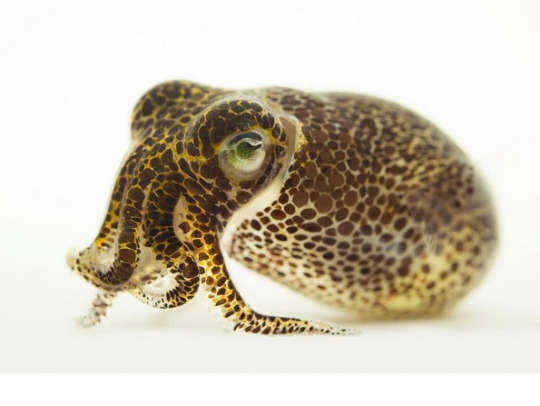


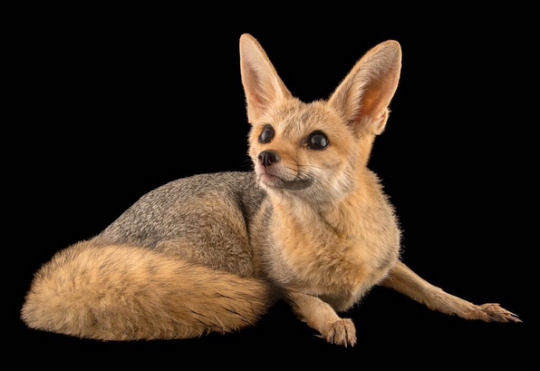
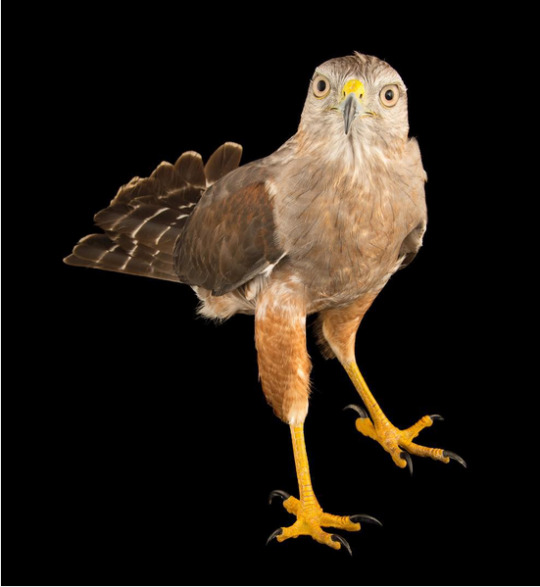



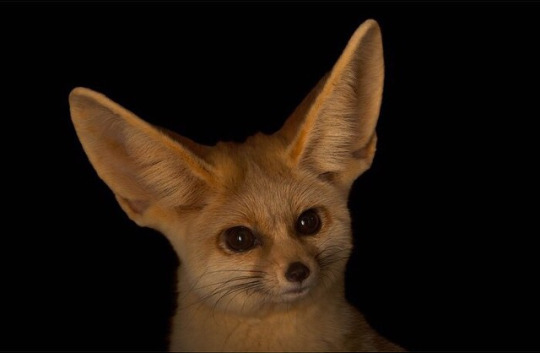

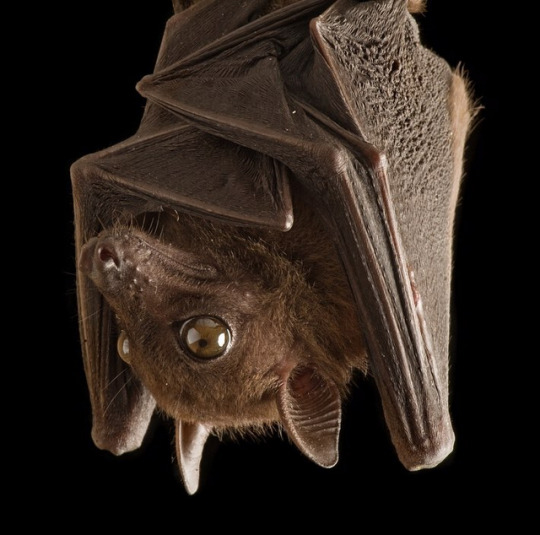
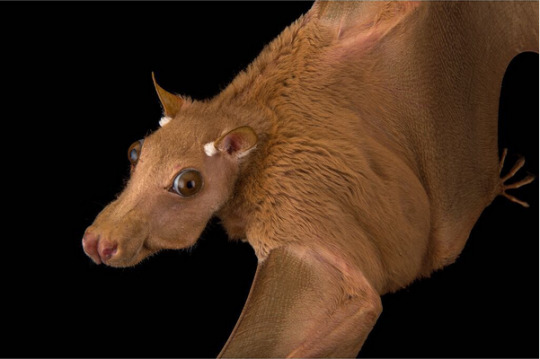
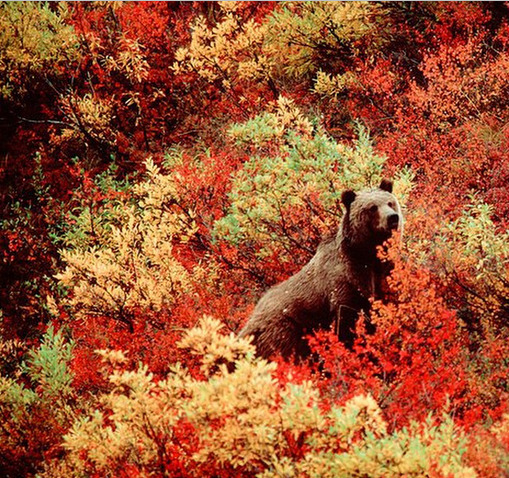

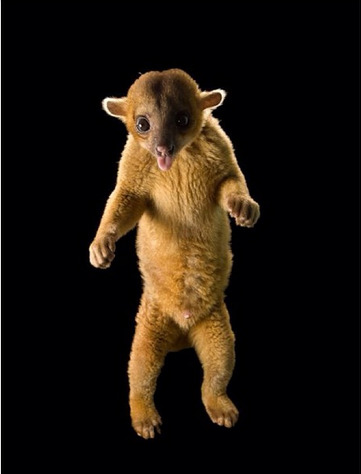
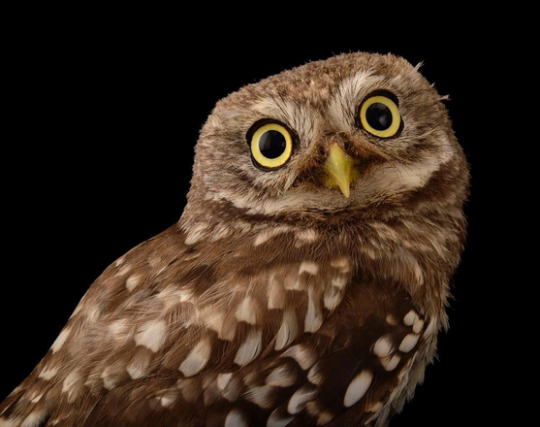
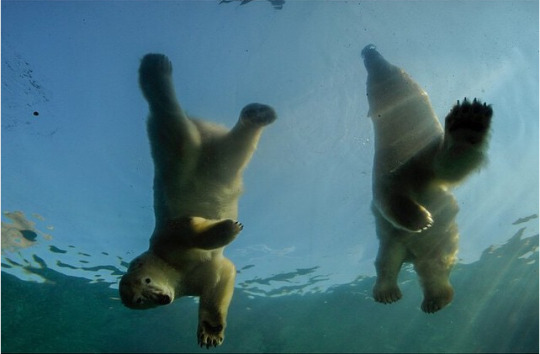
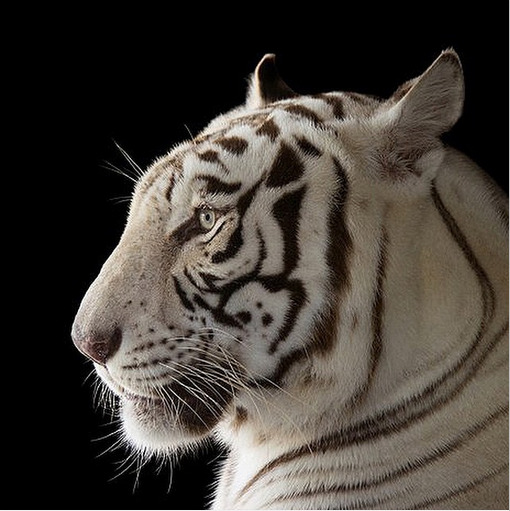

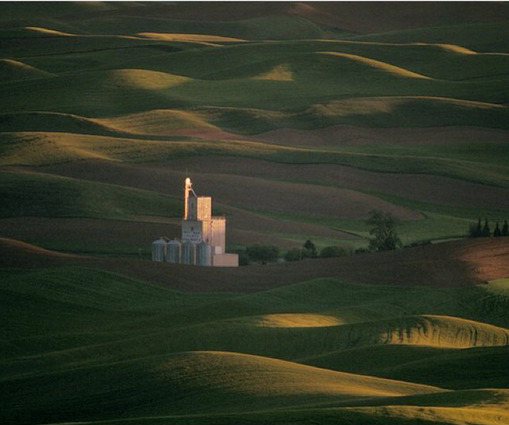

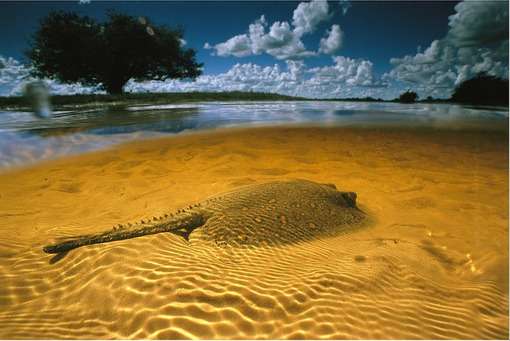

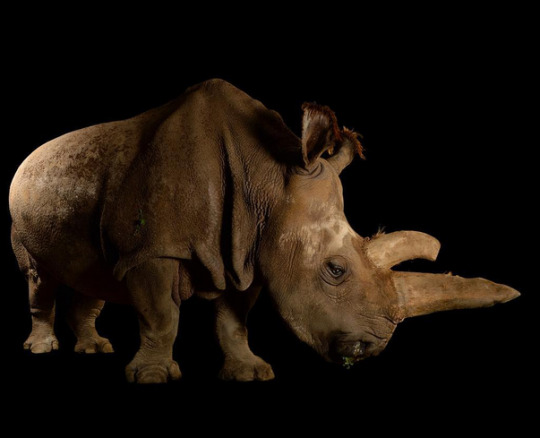

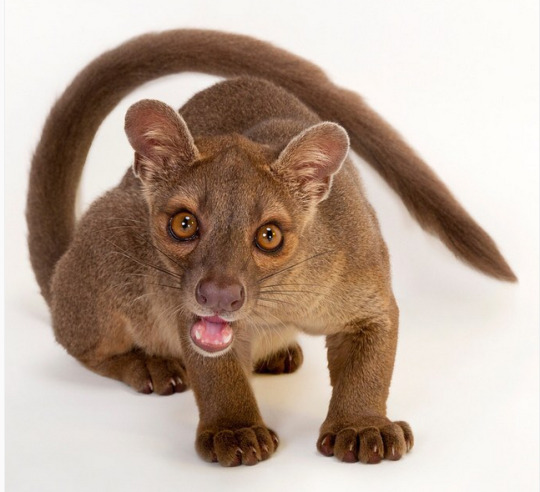
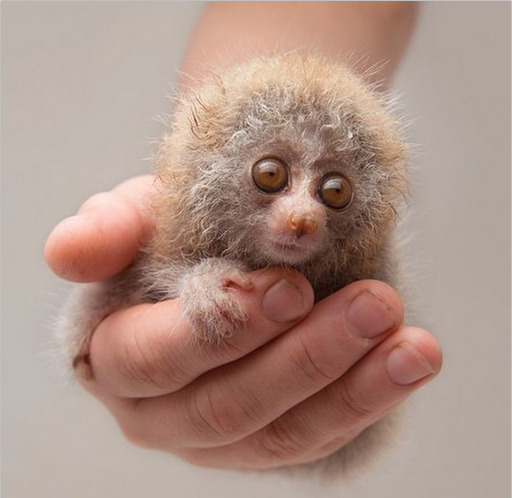
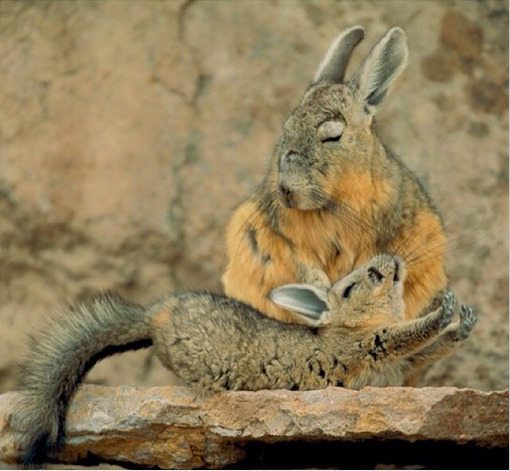


Photos and texts: @joelsartore
1-. A bobtail squid at the Monterey Bay Aquarium
2-. A breeding pair of endangered Limosa harlequin frogs at the Panama Amphibian Rescue and Conservation Project
3-. A brown-throated sloth at the PanAmerican Conservation Association in Gamboa, Panama
4-. A Cape fox at the Plzen Zoo in the Czech Republic
5-. A critically endangered Ridgeway's hawk from my trip to the Dominican Republic
6-. A critically endangered, six-week-old female baby gorilla at the Cincinnati Zoo
7-. A endangered Matschie's tree kangaroo at the Lincoln Children's Zoo
8-. A federally endangered yellow-footed rock wallaby at Omaha Zoo's Wildlife Safari Park
9-. A fennec fox named Sophie at Chattanooga Zoo
10-. A four-toed jerboa at the Plzen Zoo in the Czech Republic
11-. A fruit bat from Bioko Island, Equatorial Guinea
12-. A Gambian epauletted fruit bat at the Plzen Zoo in the Czech Republic
13-. A grizzly bear in fall color at Denali National Park, in Alaska's interior
14-. A horse at the Sandal Ranch near Howes, South Dakota
15-. a kinkajou at the New York State Zoo. This animal is naive to Central and South America
16-. A little owl from the Budapest Zoo
17-. Polar bears at the Columbus Zoo
18-. Rajah, an endangered male, white Bengal tiger at Alabama Gulf Coast Zoo
19-. Ridgeway's hawk
20-. The view of the Palouse hills as seen from Steptoe Butte in eastern Washington
21-. Twin three month old red pandas at the Lincoln Children's Zoo
22-. a freshwater stingray lies partially hidden in the sand of a flooded country road in Brazil's Pantanal
23-. A king penguin rookery from South Georgia Island's St. Andrews Bay
24-. Nabire, one of just five northern white rhinos left on the planet. RIP
25-. jaguarundi
26-. A 1-year-old fossa as the Omaha Zoo. This is Madagascar's largest mammalian predator, and its numbers are declining in the wild
27-. a 24 day-old bengal slow loris at the Endagered Primate Rescue Center in Vietnam. Is named Captain Hook, because he is missing a hand
28-. baby viscacha stretches out after a nap with mom in Chile's Atacama Desert
29-. A black swallowtail butterfly, wich is native to Nebraska, at the Lincoln Children's Zoo
1 note
·
View note
Video
youtube
A Wild Adventure: Exploring Sydney Zoo
Sydney Zoo is a thrilling sanctuary for over 4,000 animals, showcasing awe-inspiring and endangered species from across the globe. Embark on a journey through the African Boardwalk, where you'll witness scenes straight out of the savannah in incredible mixed-species habitats. Stroll down the lush Primate Boulevard and be captivated by the exotic animals of south-east Asia.
Immerse yourself in the beauty of the open-range Australia habitat, where kangaroos and wallabies roam freely along winding pathways. Sydney Zoo stands out as the only zoo and aquarium combination in New South Wales, boasting the world's largest Reptile & Nocturnal House! Don't miss the chance to see the zoo from a whole new perspective with a thrilling ride on the giant Ferris wheel.
Just a quick 40-minute drive from the city, on the way to the iconic Blue Mountains, this award-winning attraction is a must-see for all animal lovers. Sydney Zoo was meticulously designed to be accessible and inclusive for all guests, with no hills or steps to hinder anyone's enjoyment. Experience the wonder and excitement of Sydney Zoo - an adventure like no other awaits!
0 notes
Text
Travel Guide To Nocturnal Wildlife Park Singapore For Night Thrills
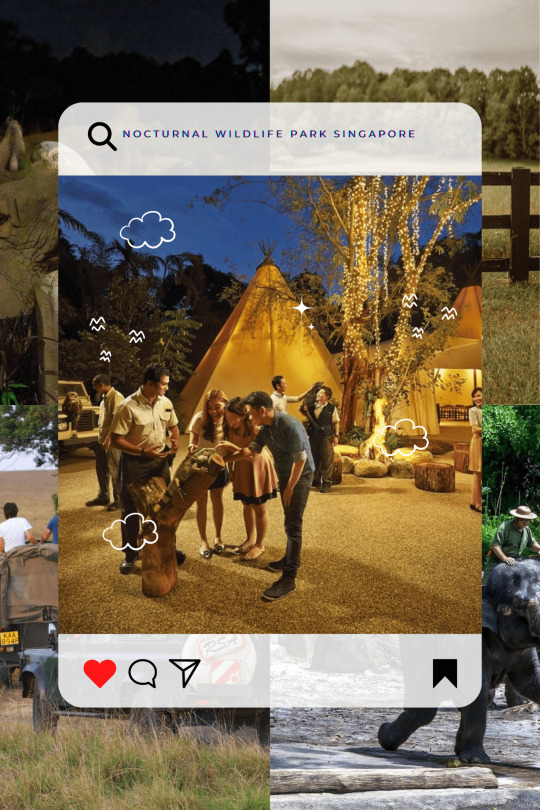
If you're seeking a truly unforgettable adventure in Singapore, look no further than Wildlife Park Singapore. Nestled within the vibrant cityscape, this nocturnal wonderland promises an experience like no other, where the magic of the night comes alive amidst lush greenery and exotic wildlife. But the thrills don't end there – just a stone's throw away lies IFly: Gravity-Defying Adventure, offering an exhilarating indoor skydiving experience. Join us on a journey through the nocturnal world and beyond as we explore the wonders of Wildlife Park Singapore and the adrenaline-pumping excitement of IFly.
Wildlife Park Singapore: A Nighttime Wonderland
As the sun sets over Singapore, a different kind of energy pulsates through the air at Wildlife Park Singapore. This enchanting park, renowned for its Night Safari, offers visitors a unique opportunity to witness the wonders of the animal kingdom after dark. From elusive leopards and majestic tigers to graceful giraffes and playful pangolins, the park is home to a diverse array of nocturnal creatures, each more captivating than the last.
Embark on a guided tram ride through the park's lush landscapes, where you'll encounter over 2,500 animals from over 130 species. Traverse through seven geographical zones, from the African savanna to the Southeast Asian rainforest, and witness the fascinating behaviors of nocturnal wildlife in their natural habitat. Be sure to keep your eyes peeled for rare sightings – you never know what you might encounter on your journey through the night.
Exploring the Night Safari
No visit to Wildlife Park Singapore is complete without experiencing the Night Safari, a highlight of any trip to Singapore. Step aboard the tram and embark on a journey through the park's various habitats, where you'll encounter a diverse array of nocturnal creatures. Marvel at the sight of majestic lions prowling through the African savanna, watch graceful giraffes grazing under the moonlight, and listen to the haunting calls of the Malaysian tapir in the East Lodge.
For those seeking a more immersive experience, the park also offers walking trails where you can explore at your own pace. Wander through the Fishing Cat trail and catch a glimpse of these elusive felines as they prowl along the water's edge, or venture into the Wallaby trail and encounter kangaroos and wallabies hopping through the night. With each step, you'll discover new wonders and unforgettable moments that will leave you in awe of the natural world.
Must-See Exhibits
Throughout the Night Safari, you'll encounter a variety of exhibits showcasing the park's diverse wildlife. Be sure to visit the East Lodge, where you can witness majestic animals like the Malayan tapir, Komodo dragon, and binturong. In the Himalayan Foothills, marvel at the sight of red pandas, Himalayan tahrs, and clouded leopards, while the Nepalese Forest is home to endangered species like one-horned rhinoceroses and snow leopards.
Don't miss the park's captivating nighttime shows, where talented animal handlers showcase the park's nocturnal residents in action. From the thrilling "Creatures of the Night" presentation to the interactive "Night Safari Adventure Show," these shows offer a deeper insight into the behaviors and adaptations of nocturnal animals.
IFly: Gravity-Defying Adventure

For those seeking an adrenaline rush after their visit to Wildlife Park Singapore, IFly: Gravity-Defying Adventure offers the perfect opportunity to soar to new heights. Located nearby, IFly offers the exhilarating experience of indoor skydiving, allowing you to defy gravity and experience the sensation of freefalling in a safe and controlled environment.
Whether you're a seasoned thrill-seeker or a first-time flyer, IFly promises an unforgettable experience that will leave you buzzing with excitement. Strap on a flight suit, step into the wind tunnel, and feel the rush as you float effortlessly on a cushion of air. With expert instructors guiding you every step of the way, you'll experience the thrill of skydiving without ever having to jump out of a plane.
1 note
·
View note
Photo
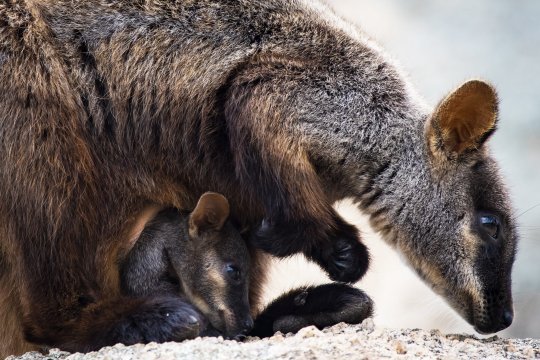
An endangered brush-tailed rock-wallaby (Petrogale penicillata) with joey perches on a rocky outcrop of the Mount Rothwell Biodiversity Interpretation Centre, Little River, Victoria.
Photo Credit: Annette Ruzicka
#annette ruzicka#photographer#australian geographic#brush-tailed rock-wallaby#petrogale penicillata#animal#mammal#wallaby#mount rothwell biodiversity interpretation centre#little river#victoria#australia#nature#wildlife
67 notes
·
View notes
Text

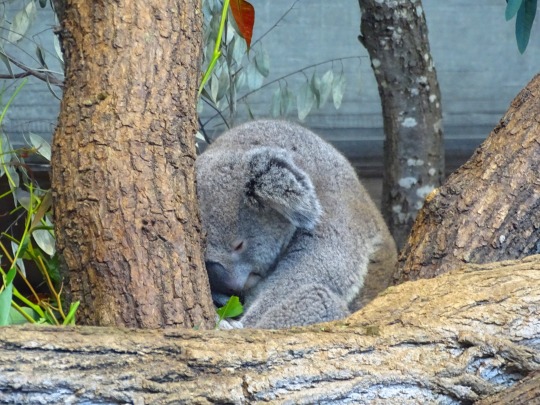








Save the Koala Day
Koalas, one of Australia's most beloved animals, are facing a threat to their survival due to habitat loss, bushfires, and disease.
Lovable and distinct, the koala is sadly vulnerable and at risk. Save the Koala Day was created to help this delightful species return to its healthy status!
History of Save the Koala Day
Started by the Australian Koala Foundation, Save the Koala Day is part of a bigger celebration which takes place during all of September, which is Save the Koala Month. As the habitat koalas live in is getting destroyed through deforestation, koalas are in need of help.
Save the Koala Day was begun as a time to raise awareness about the fact that koalas are at risk and have even been placed on the endangered species list. The future of these lovable, cuddly creatures that are native to Australia is in peril if the humans do not work together to help save them.
Gather some friends, family members or coworkers and make a commitment to helping through Save the Koala Day!
How to Celebrate Save the Koala Day
Humans who care can use this day have a great opportunity to enjoy the cuteness of koalas while raising awareness and helping with their plight. Try out some of these ideas to celebrate and enjoy Save the Koala Day:
Make a Donation to Save the Koalas
One of the most important ways that the average person can help with Save the Koala Day is to make a financial donation to an organization that works to help keep these furry little animals protected.
Donations can be made to one of these charitable organizations that help to protect koalas:
Australian Koala Foundation. This organization has been functioning since 1986 and they work toward protecting the environment, creating maps for koala habitats and more.
World Wildlife Fund (WWF). Established in 1961, WWF helps treat injured koalas, rehabilitate them, return them to the wild, replant trees and help build better habitats for them.
Koala Hospital. Part of the Koala Conservation Australia charity, the Koala Hospital helps support the life-saving work to protect and care for koalas and their habitats.
Learn More About Koalas
Save the Koala Day is a great time to gather fun facts and bits of trivia about koalas that can be shared in order to raise awareness about the need to help the koalas. Enjoy some of these fun facts:
Koalas are big eaters These little furry friends can eat up to a kilogram a day of eucalyptus, which is a low energy diet. But they’ll only choose from 50 of about 700 different species of the eucalyptus plant.
Koalas are sleepy little guys As nocturnal animals that need more sleep than most, koalas can sleep up to 18 hours per day. They wake during the night to forage for food.
Koalas are marsupials Though they have been called the misnomer “koala bears”, these creatures are actually marsupials, in the same family as kangaroos and wombats.
Baby koalas are called joeys Just like kangaroos, new koalas are referred to as joeys, as are opossums and wallabies.
Source
#last Friday in September#29 September 2023#Save The Koala Day#SaveTheKoalaDay#San Diego#San Diego Zoo#Balboa Park#California#summer 2011#USA#animal#original photography#travel#vacation#Zoo Zürich#Zurich#day trip#Schweiz#Switzerland#tourist attraction#landmark#flora#fauna#nature#tree#spring 2019
1 note
·
View note
Text
Tasmania's Untamed Beauty: A Wildlife Hiking Wilderness Nature Tour
Nestled in the southern corner of Australia, Tasmania is a wilderness wonderland teeming with natural beauty and rich biodiversity. For adventurers and nature enthusiasts, embarking on a wildlife hiking wilderness nature tour in Tasmania is an unparalleled opportunity to explore pristine landscapes, encounter unique wildlife, and immerse oneself in the unspoiled wilderness. In this article, we'll take you on a virtual journey through Tasmania's untamed beauty and the thrilling experiences that await on this exceptional tour.
The Allure of Tasmania's Wilderness:
1. Diverse Ecosystems: Wildlife hiking wilderness nature tour Tasmania boasts an astonishing variety of ecosystems, from rugged mountain ranges to ancient rainforests, coastal cliffs to serene lakes. Each environment harbors its own distinct flora and fauna.
2. Unique Wildlife: Tasmania is a sanctuary for an array of unique and endangered species, including the Tasmanian devil, wombats, wallabies, and a myriad of bird species. Witnessing these creatures in their natural habitat is a rare and awe-inspiring experience.
3. Pristine Wilderness: Much of Tasmania's wilderness remains untouched and protected, offering a glimpse into a world where nature reigns supreme. It's a place where you can disconnect from the modern world and reconnect with the natural one.
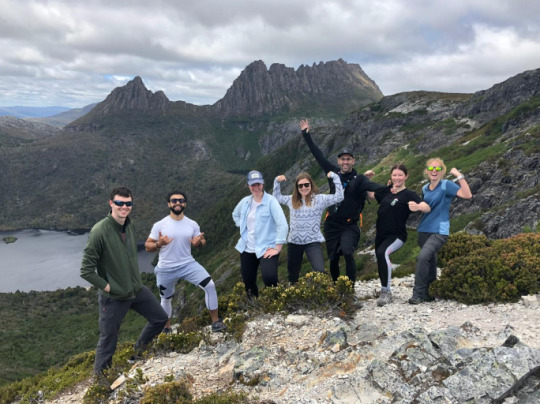
The Wildlife Hiking Wilderness Nature Tour:
1. Explore World Heritage Sites: Tasmania is home to several UNESCO World Heritage Sites, including the Tasmanian Wilderness, Cradle Mountain-Lake St. Clair National Park, and the Tasmanian Wilderness Coast. These sites are your playground for adventure.
2. Guided Hiking: Knowledgeable guides lead you on hikes through diverse landscapes, sharing insights about the flora, fauna, and indigenous history of the region. Choose from a range of hiking trails suitable for various fitness levels.
3. Wildlife Encounters: Encounter Tasmanian devils, quokkas, echidnas, and other fascinating wildlife in their natural habitat. Wildlife spotting tours and nocturnal adventures provide unique opportunities for observation.
4. Birdwatching Paradise: Tasmania is a birdwatcher's paradise, with numerous endemic species. Keep your binoculars ready for sightings of the swift parrot, wedge-tailed eagle, and the iconic black cockatoo.
5. Stargazing: Tasmania's wilderness offers some of the best stargazing opportunities in the world. Clear, unpolluted skies provide a canvas for stargazers to marvel at the Southern Hemisphere's celestial wonders.
Planning Your Wildlife Tour:
1. Choose Your Season: Tasmania's climate varies throughout the year, so choose a season that aligns with your preferences. Spring and summer offer pleasant hiking conditions, while autumn showcases vibrant foliage.
2. Pack Appropriately: Be prepared for changing weather conditions, and bring appropriate clothing and gear for hiking and wildlife viewing.
3. Responsible Tourism: Respect the environment and wildlife by following Leave No Trace principles and local guidelines. Minimize your impact on fragile ecosystems.
4. Accommodation: Tasmania offers a range of accommodation options, from cozy wilderness lodges to camping under the stars. Choose lodging that suits your comfort level.
5. Local Cuisine: Savor Tasmania's culinary delights, including fresh seafood, artisanal cheeses, and world-class wines.
Conclusion:
A wildlife hiking wilderness nature tour in Tasmania is an immersion into the untamed beauty of one of Australia's most pristine regions. It's a journey that will awaken your sense of wonder, ignite your adventurous spirit, and leave you with memories of encounters with unique wildlife and breathtaking landscapes. Tasmania's wilderness beckons, inviting you to explore its hidden treasures and forge a deep connection with nature in its purest form.
For more info. visit us:
Tasmania 2 day tour
Cradle mountain guided walks
Cradle mountain day trip
0 notes
Text
youtube
I'm so happy about this!!
I’m very, very passionate about the preservation of the potoroo. It’s the most endangered mammal in Australia, but people know and care far less about it than tigers or pandas or any other big glamorous famous endangered animal. It’s a little gray/brown ratlike creature, and even many people in Australia have never even heard of. But it’s a “living fossil” like sharks and crocodilians, and was going strong until European colonizers showed up, bringing with them feral cats and foxes.
The Gilbert’s potoroo in fact was thought to be extinct for years already, until not long ago one was caught live in a wallaby trap. They’ve already come so close to being wiped out, and are ever right on the edge, with few people who know or care, and they’re really very cute little guys who are also “ecosystem engineers” that help spread minerals through the soil, promoting the growth of plants in the environment, which helps all the other critters AND prevents forest fires too.
If you want to help potoroos please donate to AUSSIE ARK or THE GILBERT'S POTOROO ACTION GROUP!
0 notes
Text
Bruny Island land clearing unites locals in opposition, as developer and real estate agent fined
The sudden, unapproved clearing of land in a small coastal town on Bruny Island has left neighbours furious, with a property owner handed a $2,700 fine, before plans were submitted for a housing subdivision.
Trees were cleared by heavy machinery on a private block of land in Dennes Point, on the north coast of the popular tourist island, in July before vegetation burning occurred.
Neighbours say they were not informed beforehand, and argue it has resulted in fewer quolls, wallabies and native birdlife activity in the area.
The land clearing on the 3.5-hectare property resulted in the loss of three white gums — an important species for the survival of the critically-endangered 40-spotted pardalote.
The trees — which included she-oaks, pines and a dense understorey — were on a substantial slope, with a row of neighbouring houses at the bottom.
Suzie Perrott bought one of the houses two years ago for the tranquillity in retirement with her husband, with plans to move permanently from her current home in Campbell Town.
However, she said, everything had changed after the clearing occurred.
"I have photographs of our little cottage, and it just looks like we have a forest around it, it was so beautiful," Ms Perrott said.
"Now you can't see any of the trees. The animals, you don't see the animals jumping around the front yard anymore.
"It's very sad, it's really sad. I just can't believe it's happening."
Ms Perrott said she had concerns for water runoff without the vegetation as a buffer, with excessive pooling reported during heavy rain last spring.
The developer completed a landslide assessment in March — four months before the clearing — which noted a risk of less water infiltrating the soil should soil disturbance occur.
Neighbouring residents say they were not informed prior to the clearing and burning, including Justin Jones, who has lived at Dennes Point for 43 years.
He said the removal of the trees had impacted local wildlife.
"I've been here for 43 years, and the patch of land is very endearing to us because we all live around this, and we look for the wildlife. We know the wildlife is there," Mr Jones said.
"Now it's just a blank canvas … there's nothing anymore.
"If the developers want one house put there for themselves, put a house there, and the rest of the place, put it back to the way it was."
'You can't bring back the wildlife'
The development application for the 10-lot subdivision — with documents prepared for Hobart real estate agent and landowner Bec Owens — was advertised with Kingborough Council earlier this month.
It includes a bushfire hazard management report, prepared in December 2021, which notes that none of the white gums or she-oaks need to be removed, provided there was 2 metres of separation between canopies.
However, these were among the trees removed.
Kingborough Council has confirmed it issued the landowner Nick Owens with a $2,715 fine relating to the "unapproved" land clearing.
The amount is dictated under Tasmania's planning laws, with no discretion.
Neighbours on each side of the land are disappointed with the fine, believing it was disproportionate to the financial gain should the subdivision occur.
Mr Jones said the amount would not be a deterrent.
"What's $2,700 to birdlife? It's only money. You don't bring the birds back. You can't bring back the wildlife. It just defeats the purpose," he said.
Bruny Island is noted for providing a sanctuary for various endangered flora and fauna, due to its separation from mainland Tasmania.
This includes the critically-endangered 40-spotted pardalote, which solely relies upon white gum trees.
Commonwealth and Tasmanian government documents note that the removal of single trees can potentially impact the bird species.
'Could have been handled better'

Ms Owens refused to comment on the matter when contacted, with a statement released on behalf of fellow land owner Nick Owens.
"In July last year, as a response to a Kingborough Council abatement notice, we undertook works to remediate our site from bushfire risk and we removed introduced pine trees [a declared weed] and three gum trees in preparation to re-plant native species," the statement reads.
"With hindsight, we appreciate this was unsightly and this could have been handled better but are looking forward to the regeneration of [the] site with native species.
"The application we have lodged seeks to create 10 sensitively designed lots of up to 4,750 square metres in size on the 3.3 hectare site, which is already zoned residential, will have limited traffic implications as well as providing a public walking path, giving all the community a safe walking access to the beach."
Land clearing an ongoing issue
The land at Dennes Point did not meet the threshold for having significant conservation values, however, elsewhere in Tasmania, landowners are continuing to clear native forest — and wearing the subsequent fines.
In its latest annual report, the Tasmanian Forest Practices Authority (TFPA) noted that 180 hectares of land had been cleared in the state without approval during 2021-22.
The TFPA issued 21 fines totalling $657,500 — a significant increase on $390,000 from 12 months earlier, and a 600 per cent increase over a three-year period.
From 1996 to 2022, Tasmania has lost almost 160,000 hectares of native forest due to approved and illegal land clearing.
TFPA board chair Pamela Allan said unauthorised land clearing remained a significant problem in Tasmania — and that new approaches might be needed.
"There continues to be clearance of trees without first seeking advice on either the regulatory controls that exist or the necessary approvals required," she wrote.
"The authority is now considering rehabilitation orders to return the land to its natural vegetated state, as fines have not appeared to be a sufficient deterrent.
"Compliance and enforcement standards are being strengthened, however many forest operations undertaken on non-industrial private land continue to demonstrate a poor understanding of, or disregard for, the [Forest Practices Act] and the Forest Practices Code."
Use left and right arrow keys to control image transition
0 notes
Text
Why the Overland Track in Tasmania Should Be on Every Hiker's Bucket List
The Overland Track in Tasmania is a world-renowned hiking trail that covers approximately 65 kilometres of rugged wilderness. The Overland Track is a challenging hike that offers hikers the opportunity to test their physical and mental limits. The trail is not for the faint of heart, but it is incredibly rewarding for those who complete it. It is considered one of the greatest multi-day hikes in the world and should be on every hiker's bucket list for several reasons:
Scenic Beauty: The Tasmania south coast track takes hikers through some of the most breathtaking landscapes in Tasmania. The trail passes through ancient rainforests, alpine meadows, and glacial lakes. The views of Cradle Mountain and Barn Bluff are simply stunning.
Wildlife: The Overland Track is home to a wide variety of wildlife, including wallabies, wombats, and Tasmanian devils. Hikers may also see a variety of bird species, including the rare and endangered Tasmanian wedge-tailed eagle.
Cultural Significance: The Overland Track has cultural significance for the Tasmanian Aboriginal people, who have lived in the area for over 40,000 years. The trail passes through several culturally significant sites, including Lake St Clair, which is a sacred site for the Aboriginal people.
Conservation: The Overland Track is located in the heart of the Tasmanian Wilderness World Heritage Area, which is one of the last remaining temperate wilderness areas in the world. By hiking the Overland Track, hikers can help support conservation efforts and protect this unique and fragile ecosystem.
Overland Track in Tasmania should be on every hiker's bucket list because of its scenic beauty, wildlife, cultural significance, adventure, and conservation value.
Source
0 notes